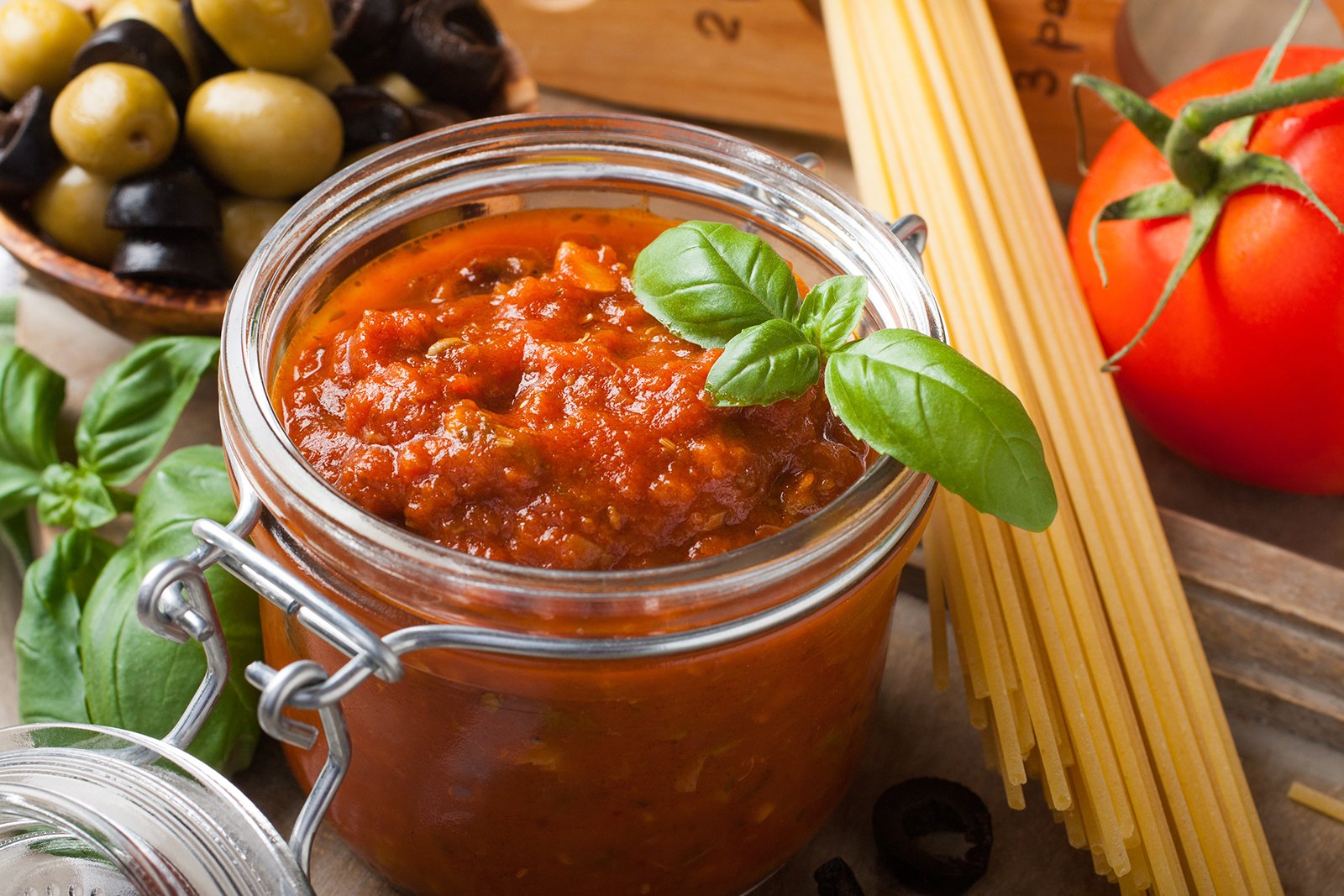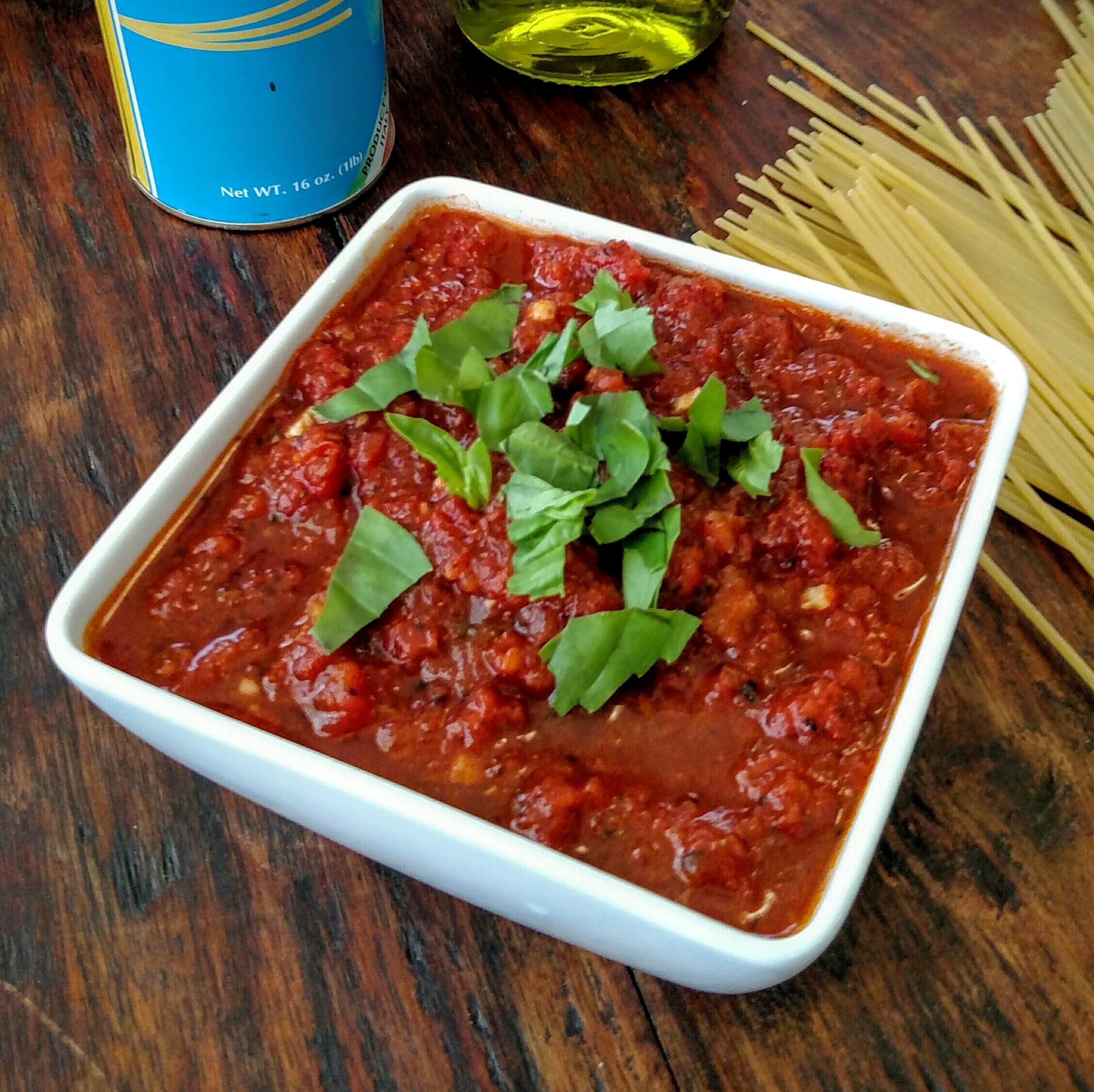If you’re a fan of classic Italian cuisine, you’ve likely heard of Rao’s Marinara Sauce. Known for its simplicity and bold flavor, this marinara sauce recipe has been cherished by many for years. In this comprehensive guide, we’ll take you through the step-by-step process of making Rao’s Marinara Sauce right in your own kitchen.
Introduction to Rao’s Marinara Sauce
:strip_icc()/bhg-Kristin-Cavallari-raos-tout-7507378-c8fe6eec974d47c096ab400f1f842072.jpg)
What sets Rao’s Marinara Sauce apart is its bold flavor profile. The combination of ripe tomatoes, aromatic garlic, and fragrant herbs creates a symphony of taste that delights the palate with every bite. Whether used as a pasta sauce, pizza topping, or dipping sauce, Rao’s Marinara Sauce elevates any dish it accompanies.
For many, Rao’s Marinara Sauce isn’t just a recipe—it’s a cherished tradition passed down through generations. Its roots in the rich culinary heritage of Italy evoke feelings of warmth, comfort, and nostalgia, making it a staple in countless kitchens around the world.
One of the most appealing aspects of Rao’s Marinara Sauce is its versatility. While it shines as a pasta sauce, it can also be used in a myriad of other dishes, from soups and stews to casseroles and meatballs. Its adaptability allows home cooks to get creative in the kitchen while still enjoying the authentic flavors of Italy.
Whether you’re a seasoned chef or a novice cook, Rao’s Marinara Sauce serves as the perfect starting point for exploring the world of Italian cuisine. With its simple yet flavorful profile, it invites experimentation and encourages culinary exploration, inspiring home cooks to create memorable meals for themselves and their loved ones.
Ingredients You’ll Need:

- 2 cans (28 ounces each) of canned Italian Roma (plum) tomatoes
- 4 cloves of garlic
- 1 medium onion
- 1/4 cup of olive oil
- 1/4 teaspoon of red pepper flakes
- Salt (to taste)
- Black pepper (to taste)
- 1/4 cup of fresh basil leaves
- 1/4 cup of white wine (optional)
Step-by-Step Guide to Making Rao’s Marinara Sauce

Step 1: Prepare Your Ingredients
Begin by gathering all the ingredients required for making Rao’s Marinara Sauce. This includes:
- Canned Italian Roma (plum) tomatoes: Opt for high-quality canned tomatoes for the best flavor and texture.
- Garlic: Use fresh garlic cloves and finely chop them for even distribution of flavor in the sauce.
- Onion: Select a medium-sized onion and chop it finely. The onion adds depth and sweetness to the sauce.
- Olive oil: Choose a good-quality olive oil for sautéing the aromatics. It adds richness and helps to marry the flavors together.
- Red pepper flakes: These add a subtle hint of heat to the sauce, but you can adjust the quantity based on your preference for spiciness.
- Salt and black pepper: These are essential for seasoning the sauce. Taste as you go and adjust the seasoning accordingly.
- Fresh basil leaves: Fresh basil adds a burst of freshness and herbaceous aroma to the sauce. Chop the basil finely before adding it to the sauce.
- White wine (optional): While optional, white wine adds depth and complexity to the sauce. If using, select a dry white wine that complements the flavors of the dish.
Once you have gathered all the ingredients, it’s time to prepare them for cooking:
- Tomatoes: If using whole canned tomatoes, you may need to break them up into smaller pieces using a wooden spoon or spatula once they’re in the saucepan. This helps to distribute the tomato flavor evenly throughout the sauce.
- Garlic and onion: Peel and finely chop the garlic cloves and onion. The finer the chop, the more seamlessly they will integrate into the sauce.
- Basil: Wash the basil leaves thoroughly and pat them dry with a paper towel. Remove the leaves from the stems and chop them finely. This ensures that the basil is evenly distributed and releases its flavor into the sauce.
- Other ingredients: Measure out the remaining ingredients, such as olive oil, red pepper flakes, salt, black pepper, and white wine if using, and have them ready to add to the saucepan.
Step 2: Saute the Aromatics
Sauteing the aromatics is a crucial step in the preparation of Rao’s Marinara Sauce, as it helps to develop the base flavors of the sauce and infuse it with aromatic richness.
– Heating the Olive Oil: Begin by heating a generous amount of olive oil in a large saucepan over medium heat. Olive oil serves as the cooking medium for sauteing the aromatics and adds a distinctive richness to the sauce.
– Adding the Garlic and Onion: Once the olive oil is heated, add the finely chopped garlic and onion to the saucepan. These aromatic ingredients form the foundation of the sauce, lending it depth, flavor, and complexity.
- Garlic: Fresh garlic cloves are preferred for their pungent aroma and robust flavor. Finely chop the garlic to ensure that it disperses evenly throughout the sauce.
- Onion: Choose a medium-sized onion and finely chop it to achieve a uniform texture in the sauce. As the onion cooks, it releases its natural sweetness, balancing out the acidity of the tomatoes.
– Sauteing until Fragrant and Softened: Saute the garlic and onion until they become soft and translucent, typically taking around 3-4 minutes. Stir the mixture occasionally to prevent the garlic from burning, as burnt garlic can impart a bitter taste to the sauce.
– Flavor Development: As the garlic and onion cook, they release their aromatic oils and flavors, infusing the olive oil with their essence. This process creates a flavorful base for the marinara sauce, laying the groundwork for the subsequent ingredients to build upon.
– Monitoring Heat: It’s important to maintain a moderate heat level throughout the sauteing process. Medium heat allows the aromatics to cook gently without scorching, resulting in a more nuanced and well-balanced flavor profile in the finished sauce.
– Achieving Aromatics Harmony: The goal of sauteing the aromatics is to achieve a harmonious blend of flavors that forms the backbone of Rao’s Marinara Sauce. The softened garlic and onion provide a fragrant and savory base that sets the stage for the addition of tomatoes and other seasonings.
Step 3: Add the Tomatoes
Adding the tomatoes is a pivotal moment in the creation of Rao’s Marinara Sauce. Tomatoes serve as the primary ingredient and base of the sauce, imparting their rich flavor and vibrant color to the dish.
Selecting Quality Tomatoes: Choosing the right type of tomatoes is crucial for achieving the desired flavor and texture in the sauce. Opt for high-quality canned Italian Roma (plum) tomatoes, as they are known for their sweet, robust flavor and firm texture. The quality of the tomatoes directly impacts the overall taste and authenticity of the marinara sauce.
Breaking Up the Tomatoes: Once the aromatics (garlic and onion) have been sautéed to perfection, it’s time to add the canned tomatoes to the saucepan. Depending on your preference and the type of canned tomatoes you’re using, they may be whole, diced, or crushed. If the tomatoes are whole or in large pieces, use a wooden spoon or spatula to break them up into smaller chunks directly in the saucepan. This helps distribute the tomato flavor evenly throughout the sauce and ensures a smoother consistency.
Releasing Tomato Flavor: As the tomatoes cook, their natural juices are released, mingling with the aromatics and olive oil in the saucepan. This process allows the flavors to meld together, resulting in a harmonious blend of savory, sweet, and tangy notes. The tomatoes serve as the heart of the sauce, infusing it with their unmistakable taste and aroma.
Achieving the Perfect Consistency: Simmer the sauce over medium-low heat, allowing the tomatoes to break down further and thicken the sauce. Stir occasionally to prevent the sauce from sticking to the bottom of the saucepan and to ensure even cooking. The sauce should simmer gently, developing a rich and velvety consistency as it cooks.
Balancing Flavors: Throughout the cooking process, taste the sauce periodically and adjust the seasoning as needed. Add salt, black pepper, and any other desired seasonings to achieve the perfect balance of flavors. The goal is to create a sauce that is well-seasoned and bursting with delicious tomato flavor.
Importance of Tomato Quality: Using high-quality canned tomatoes is essential for achieving a flavorful and authentic marinara sauce. The tomatoes should be ripe, plump, and bursting with natural sweetness. Investing in quality ingredients sets the foundation for a sauce that is truly exceptional in taste and texture.
The Tomato Transformation: Adding the tomatoes marks a significant turning point in the cooking process, as the sauce begins to take shape and develop its signature flavor profile. The tomatoes undergo a transformation, evolving from simple canned goods into a luscious and flavorful sauce that is the hallmark of Italian cuisine.
Step 4: Season the Sauce
Seasoning the sauce is a critical step in the cooking process, as it allows you to enhance the flavor profile and ensure that the marinara sauce is well-balanced and delicious.
Enhancing Flavor with Salt and Pepper: Start by seasoning the sauce with salt and black pepper to taste. Salt helps to bring out the natural flavors of the ingredients and adds depth to the sauce, while black pepper adds a subtle warmth and complexity. Begin with a small amount of salt and pepper, tasting the sauce as you go and adjusting the seasoning as needed.
Adding Heat with Red Pepper Flakes: For those who enjoy a bit of heat, red pepper flakes are the perfect addition to Rao’s Marinara Sauce. These tiny flakes pack a punch and add a subtle spiciness to the sauce. Start with a small amount and adjust to your desired level of heat. Remember, you can always add more pepper flakes later, but you can’t take them out once they’re added.
Incorporating Additional Seasonings: While salt, pepper, and red pepper flakes are essential seasonings for marinara sauce, you can also experiment with other herbs and spices to enhance the flavor further. Fresh basil leaves are a classic addition that adds a burst of freshness to the sauce. You can also try adding oregano, thyme, or parsley for additional depth and complexity.
The Role of White Wine: While optional, adding white wine to the sauce can elevate its flavor and complexity. White wine adds acidity and brightness to the sauce, balancing the sweetness of the tomatoes and adding depth to the overall flavor profile. If using white wine, pour it into the saucepan after seasoning with salt, pepper, and red pepper flakes, and allow it to simmer for a few minutes to cook off the alcohol and meld the flavors together.
Adjusting Seasoning to Taste: As you season the sauce, taste it periodically and adjust the seasoning as needed. Remember that everyone’s palate is different, so feel free to customize the seasoning to suit your taste preferences. If the sauce tastes too acidic, you can balance it out with a pinch of sugar. Conversely, if it tastes too sweet, you can add a splash of lemon juice or vinegar to brighten the flavors.
The Importance of Seasoning: Proper seasoning is essential for creating a delicious marinara sauce. Seasoning not only enhances the natural flavors of the ingredients but also balances out any bitterness or acidity in the sauce. By taking the time to season the sauce properly, you can ensure that every bite is bursting with flavor and satisfaction.
Step 5: Simmer and Reduce
Simmering and reducing the sauce is a crucial step in the cooking process, as it allows the flavors to meld together and the sauce to thicken to the desired consistency.
Gentle Cooking Process: Once the sauce has been seasoned and all the ingredients have been added to the saucepan, reduce the heat to low and allow the sauce to simmer gently. Simmering the sauce over low heat ensures that it cooks slowly and evenly, allowing the flavors to develop fully without the risk of burning.
Allowing Flavors to Meld: As the sauce simmers, the ingredients release their natural juices and flavors, which mingle and meld together to create a harmonious blend of taste and aroma. This slow cooking process allows the flavors to intensify and develop, resulting in a sauce that is rich, complex, and deeply satisfying.
Thickening the Sauce: Simmering the sauce also helps to reduce excess moisture and thicken it to the desired consistency. As the sauce cooks, the liquid evaporates, leaving behind a thicker, more concentrated sauce. Stir the sauce occasionally to prevent it from sticking to the bottom of the saucepan and to ensure even cooking and reduction.
Flavor Enhancement: The extended cooking time during the simmering process allows the flavors to concentrate and deepen, resulting in a sauce that is bursting with rich, savory flavor. The slow simmering process also helps to soften any remaining chunks of tomatoes, resulting in a smoother, more velvety texture.
Adjusting Cooking Time: The length of time you simmer the sauce will depend on your personal preference and the desired thickness of the sauce. Some prefer a thinner, more liquid sauce, while others prefer a thicker, more robust sauce. You can adjust the cooking time accordingly to achieve the desired consistency.
Testing for Doneness: To test if the sauce is done, use a spoon to scoop up a small amount of sauce and taste it. The sauce should have a rich, full-bodied flavor and a smooth, velvety texture. If the sauce is too thin, continue to simmer it until it reaches the desired consistency. Conversely, if the sauce is too thick, you can thin it out with a bit of water or broth.
Patience is Key: Patience is key when simmering and reducing the sauce. While it may be tempting to rush the process, allowing the sauce to simmer slowly and gently will yield the best results. The extra time and care taken during this step will be evident in the final product, resulting in a marinara sauce that is truly exceptional in flavor and texture.
Step 6: Finish with Fresh Basil
Adding fresh basil to Rao’s Marinara Sauce is the final touch that elevates the flavor and adds a vibrant, herbaceous aroma to the dish.
Adding Freshness: Just before serving the sauce, stir in the chopped fresh basil leaves. Fresh basil adds a burst of freshness to the sauce, brightening up the flavor and complementing the rich, savory notes of the tomatoes and garlic.
Fragrant Aroma: As the basil is stirred into the hot sauce, its fragrant aroma is released, filling the kitchen with the unmistakable scent of fresh herbs. The aroma of basil adds an extra dimension to the sauce, tantalizing the senses and enhancing the overall dining experience.
Enhancing Flavor: In addition to its aromatic qualities, fresh basil also adds depth and complexity to the flavor of the sauce. The natural oils and flavors present in the basil leaves infuse the sauce with a subtle, herbaceous taste that perfectly complements the other ingredients.
Balance of Flavors: The addition of fresh basil helps to balance out the richness of the sauce, adding a touch of brightness and acidity that cuts through the sweetness of the tomatoes and the richness of the olive oil. This balance of flavors creates a sauce that is well-rounded and satisfying to the palate.
Versatility: While fresh basil is the traditional choice for finishing Rao’s Marinara Sauce, you can also experiment with other fresh herbs to add different flavor profiles to the sauce. Try adding chopped parsley, oregano, or thyme for a unique twist on this classic recipe.
Serving Suggestions: Once the sauce has been finished with fresh basil, it is ready to be served. Spoon the sauce over cooked pasta, use it as a dipping sauce for breadsticks, or spread it on homemade pizza dough. Rao’s Marinara Sauce is incredibly versatile and can be used in a variety of dishes to add a burst of flavor.
Presentation: In addition to enhancing the flavor of the sauce, the addition of fresh basil also adds visual appeal to the dish. The vibrant green color of the basil leaves provides a beautiful contrast against the rich red hue of the sauce, making it as visually pleasing as it is delicious to eat.
Tips for Making the Perfect Rao’s Marinara Sauce

- Use Fresh Ingredients: Fresh garlic, onions, and basil will give your sauce the best flavor.
- Don’t Skip the Wine: While optional, adding white wine to the sauce enhances its depth and complexity.
- Simmer Slowly: Allow the sauce to simmer over low heat for the best results. This helps the flavors meld together beautifully.
- Adjust Seasoning to Taste: Taste the sauce as it simmers and adjust the seasoning according to your preferences. You can add more salt, pepper, or red pepper flakes to suit your taste.
Serving Suggestions

Rao’s Marinara Sauce is incredibly versatile and can be used in a variety of dishes. Here are a few ideas to get you started:
- Toss it with your favorite pasta for a simple and satisfying meal.
- Use it as a dipping sauce for breadsticks or garlic bread.
- Spread it on homemade pizza dough as a flavorful pizza sauce.
- Serve it over grilled chicken or fish for a light and flavorful main course.
Conclusion
Making Rao’s Marinara Sauce at home is easier than you might think, and the results are absolutely worth it. With just a handful of simple ingredients and a little bit of time, you can create a delicious and versatile sauce that will elevate any meal. So why not give it a try? Your taste buds will thank you!





